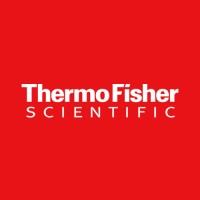CD19 / Brilliant Violet 480 / eBio1D3 (1D3)
Product Details
| Description | CD19 Monoclonal Antibody (eBio1D3 (1D3)), Brilliant Violet 480, eBioscience | |
|---|---|---|
| Conjugate | Brilliant Violet 480 | |
| Clone | eBio1D3 (1D3) | |
| Target Species | Mouse | |
| Applications | FC | |
| Supplier | Thermo Fisher Scientific | |
| Catalog # | Sign in to view product details, citations, and spectra | |
| Size | ||
| Price | ||
| Antigen | ||
| Host | ||
| Isotype |
About CD19
This gene encodes a member of the immunoglobulin gene superfamily. Expression of this cell surface protein is restricted to B cell lymphocytes. This protein is a reliable marker for pre-B cells but its expression diminishes during terminal B cell differentiation in antibody secreting plasma cells. The protein has two N-terminal extracellular Ig-like domains separated by a non-Ig-like domain, a hydrophobic transmembrane domain, and a large C-terminal cytoplasmic domain. This protein forms a complex with several membrane proteins including complement receptor type 2 (CD21) and tetraspanin (CD81) and this complex reduces the threshold for antigen-initiated B cell activation. Activation of this B-cell antigen receptor complex activates the phosphatidylinositol 3-kinase signalling pathway and the subsequent release of intracellular stores of calcium ions. This protein is a target of chimeric antigen receptor (CAR) T-cells used in the treatment of lymphoblastic leukemia. Mutations in this gene are associated with the disease common variable immunodeficiency 3 (CVID3) which results in a failure of B-cell differentiation and impaired secretion of immunoglobulins. CVID3 is characterized by hypogammaglobulinemia, an inability to mount an antibody response to antigen, and recurrent bacterial infections. Alternative splicing results in multiple transcript variants encoding distinct isoforms. [provided by RefSeq, Jul 2020]
This gene encodes a member of the immunoglobulin gene superfamily. Expression of this cell surface protein is restricted to B cell lymphocytes. This protein is a reliable marker for pre-B cells but its expression diminishes during terminal B cell differentiation in antibody secreting plasma cells. The protein has two N-terminal extracellular Ig-like domains separated by a non-Ig-like domain, a hydrophobic transmembrane domain, and a large C-terminal cytoplasmic domain. This protein forms a complex with several membrane proteins including complement receptor type 2 (CD21) and tetraspanin (CD81) and this complex reduces the threshold for antigen-initiated B cell activation. Activation of this B-cell antigen receptor complex activates the phosphatidylinositol 3-kinase signalling pathway and the subsequent release of intracellular stores of calcium ions. This protein is a target of chimeric antigen receptor (CAR) T-cells used in the treatment of lymphoblastic leukemia. Mutations in this gene are associated with the disease common variable immunodeficiency 3 (CVID3) which results in a failure of B-cell differentiation and impaired secretion of immunoglobulins. CVID3 is characterized by hypogammaglobulinemia, an inability to mount an antibody response to antigen, and recurrent bacterial infections. Alternative splicing results in multiple transcript variants encoding distinct isoforms. [provided by RefSeq, Jul 2020]
About Brilliant Violet 480
Brilliant™ Violet 480 (BV480) is a green-emitting non-tandem polymer fluorophore that can be excited by the 405 nm Violet laser and collected using a 525/40 bandpass filter. BV480 has an excitation peak at 436 nm and an emission peak at 478 nm, and provides an optimized alternative to BV510. Other dyes that are similar include StarBright Violet 475 (Bio-Rad) While BV480 can be detected on the same filter as BV510, its emmision profile reduces spillover into the BV605, BV650, and BV711 channels. Additionally BV480's excitation profile will reduce cross-laser excitation with the UV laser, resulting in less spillover into UV channels than BV510. These advantages make BV480 an optimal choice for flow cytometry panels using multiple reagents on Violet and/or UV lasers. This dye is part of the Brilliant™ Violet dye line. BV510 and BV480 are the only dyes in the Brilliant™ Violet dye family that are not tandem fluorophores based off the BV421 polymer core, but they have nearly the same maximum excitation.
Brilliant™ Violet 480 (BV480) is a green-emitting non-tandem polymer fluorophore that can be excited by the 405 nm Violet laser and collected using a 525/40 bandpass filter. BV480 has an excitation peak at 436 nm and an emission peak at 478 nm, and provides an optimized alternative to BV510. Other dyes that are similar include StarBright Violet 475 (Bio-Rad) While BV480 can be detected on the same filter as BV510, its emmision profile reduces spillover into the BV605, BV650, and BV711 channels. Additionally BV480's excitation profile will reduce cross-laser excitation with the UV laser, resulting in less spillover into UV channels than BV510. These advantages make BV480 an optimal choice for flow cytometry panels using multiple reagents on Violet and/or UV lasers. This dye is part of the Brilliant™ Violet dye line. BV510 and BV480 are the only dyes in the Brilliant™ Violet dye family that are not tandem fluorophores based off the BV421 polymer core, but they have nearly the same maximum excitation.
Experiment Design Tools
Panel Builders
Looking to design a Microscopy or Flow Cytometry experiment?
Validation References
Reviews & Ratings
| Reviews |
|---|
Looking for more options?
3840 CD19 antibodies from over 56 suppliers available with over 217 conjugates.





